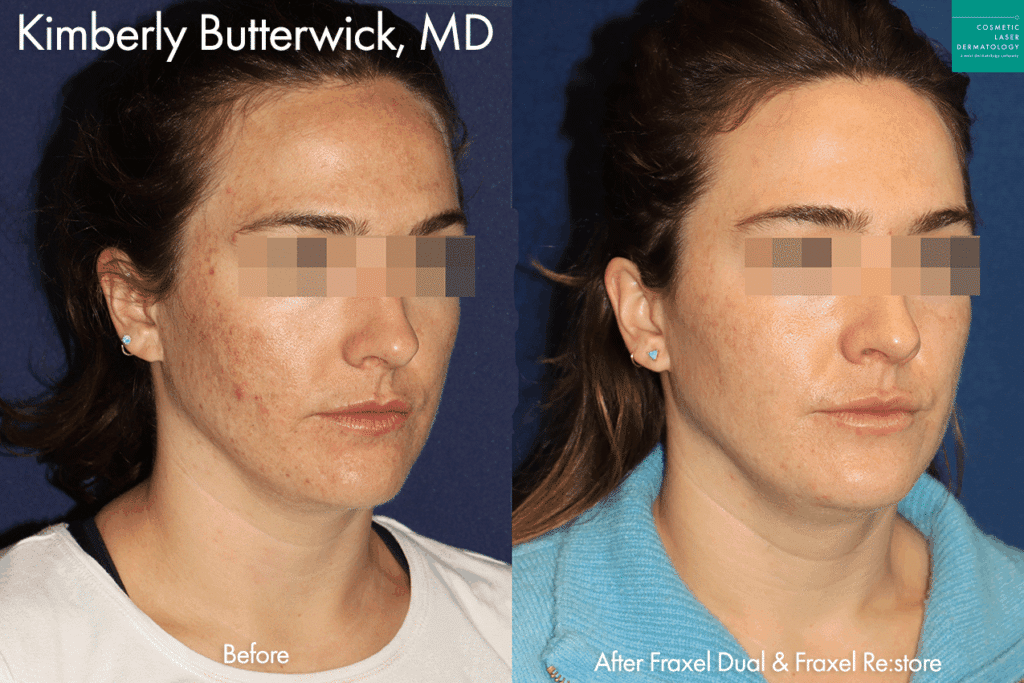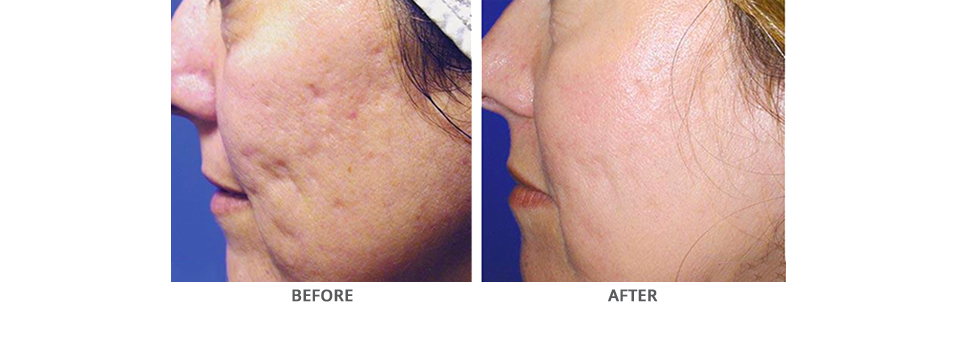3 Easy Facts About Acne Scars Explained
3 Easy Facts About Acne Scars Explained
Blog Article
The Facts About Acne Scars Uncovered
Table of ContentsThe Of Acne ScarsEverything about Acne ScarsMore About Acne ScarsAcne Scars Fundamentals ExplainedThe Greatest Guide To Acne Scars
Raised acne scars occur when the body creates too much collagen and form a noticeable bump. As we age, acne marks become much more significantly because our skin loses collagen.An individual delays treatment for inflammatory acne. If we really did not need another reason why not to stand out an acne, know that a scar could be the straight result of your activities.
Your hereditary makeup plays a big role in exactly how much acne, and what kind of acne you may establish. As we stated earlier, there is no magic component to take acne scars away in the blink of an eye. There are therapies offered that help reduce the scarring gradually.
To carry out acne mark surgical procedure, a dermatologist might lift the mark, bringing it closer to the surface area of the skin to make it much less noticeable. best for acne marks that are nearly flat. These therapies include laser skin resurfacing, chemical peels off and microdermabrasion. Resurfacing gets rid of layers of the skin, which allows the body to create brand-new skin cells.
Not known Facts About Acne Scars
best for all kinds of acne scars. Lasers and various other light therapies can treat raised marks safely and efficiently. Treatment with a pulsed color laser (PDL) can aid minimize the impulse and discomfort, reduce color, and flatten an elevated mark. For individuals with lighter skin, intense pulsed light (IPL) also might be a therapy alternative.
After 3 needling treatments, there was improvement in the appearance of acne marks over time contrasted with the control team, with very little pain reported - acne scars. Therapy of acne scarring stays a healing challenge, with treatment techniques that consist of an array of feasible options.
Nonablative and ablative lasers can be used to either eliminate or perforate skin in a penalty pinpoint pattern, with resulting neocollagenesis; only a portion of the skin is treated with each treatment, and a series of therapies are called for to deal with the entire damaged surface area. It has actually been recommended that neocollagenesis and enhancement of acne marks can additionally be attained utilizing needle rollers, which make use of a mechanical, macroscopic approach to cause little epidermal and dermal openings.
Acne Scars Can Be Fun For Anyone
Like paint rollers, such devices can be moved back and forth along the skin. Needling as a possible therapy for acne scarring was introduced by Camirand and Doucet, that described usage of a tattoo weapon to abrade acne scars.
At each of these sees, needling was performed on the research study therapy area, and topical anesthetic was just rubbed into the control area. Digital photographs and unfavorable occasions (eg, infection, extended erythema, extended edema, serosanguineous drain, bleeding, ulcer, disintegration, and pigmentation), including their duration, resolution, intensity, connection to the research study treatment, and any curative actions taken, description were taped prior to each therapy.

Discomfort degree was videotaped based upon a 10-point visual analog scale after the procedure. Instantly after each therapy, mild hand-operated stress with gauze was requested 5 mins to regulate identify bleeding and product secretion. The skin was soaked with saline swabs for an hour to help with hydration while the individuals were educated pertaining to the need for home treatment.
Some Ideas on Acne Scars You Need To Know
The tool was after that additional cleansed by gas sanitation, saved in a closed package, and classified with the individual's name and the initial treatment day on the box up until the next therapy. This sanitation process was followed to make certain a high degree of infection control in this research study setup. The primary outcome procedure was the quantitative international scarring grading system, established by Goodman and Baron.
Two blinded skin doctors (S.H. and M.P.) independently rated participants' acne marks based on basic electronic pictures obtained at baseline and at the 3-month and 6-month follow-up brows through. Required agreement was utilized to reconcile scores. Considered that this was a very early pilot test, we considered it proper to consider acne marks jointly, not individually, by various morphologic subtypes (eg, rolling, boxcar, ice choice, and more).
and M.P.) did not join randomization or treatment and therefore had the ability to be blinded look at this now concerning job. Changes in mean mark scores from standard to 3 and 6 months, respectively, were calculated for the treatment and control arms. Repeated-measures analysis of difference with pairwise comparisons with Sidak adjustment were performed to test whether the scar rating varied on treatment kind, time, or the communication between the 2.
The Wilcoxon authorized rank examination was utilized to assess whether the difference in general acne mark appearance was connected with therapy type. The research study took location from November 30, 2009, through July 27, 2010. Twenty people consented, and 5 left before the very first therapy. The staying 15 finished all treatments and are evaluated.
Getting The Acne Scars To Work
At 3 months compared to baseline, the reduction in mark score in the needling team was nonsignificant (mean difference, 2.4, 95% CI, 0.01 to 4.8; P =.052) (Figure 3). The needling procedure was not especially painful. The mean discomfort rating was 1.08 of 10. Pain ratings increased slightly over time (P =.01), with week 4 discomfort ratings (mean, 1.75; 95% CI, 0.90-2.60) substantially greater than week 2 (mean, 0.78; 95% CI, 0.40-1.20) and week 0 (mean, 0.71; 95% CI, 0.40-1.00).
When asked to estimate the pain experienced throughout and in the days after their procedure, individuals commonly reported no discomfort (acne scars). Most individuals were very pleased with their procedure, replied yes when asked if they would do this treatment Learn More Here once more to deal with additional marks, and claimed they would certainly recommend needling to their pals
Mild short-term erythema and edema, which were not identified as unfavorable occasions and for this reason not officially tracked, were consistently observed by the detective (M.A.) and reported by individuals after therapies. This research discloses some renovation in acne marks after a series of 3 therapies of needling. There is a statistically substantial improvement in such scars in the treatment group from baseline to 6 months and no considerable renovation throughout this period in the control team.

Report this page